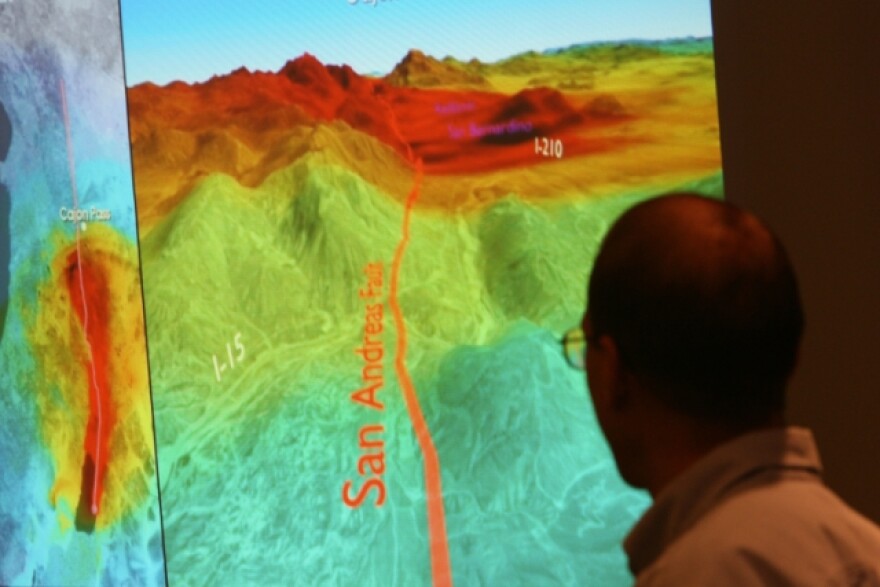With our free press under threat and federal funding for public media gone, your support matters more than ever. Help keep the LAist newsroom strong, become a monthly member or increase your support today.
This is an archival story that predates current editorial management.
This archival content was written, edited, and published prior to LAist's acquisition by its current owner, Southern California Public Radio ("SCPR"). Content, such as language choice and subject matter, in archival articles therefore may not align with SCPR's current editorial standards. To learn more about those standards and why we make this distinction, please click here .
A New System Could Text You 30 Seconds Before An Earthquake Hits

It's been 23 years since the last major earthquake shook Los Angeles and caused some $10 billion in property damage. Now, a consortium of seismologists from universities along the west coast are working under the U.S. Geological Survey to build an early warning system for future earthquakes.
So, how does an earthquake warning system work? First, during an earthquake, there are two kinds of tremor waves: P waves and S waves . P waves are the initial tremors, and are less significant than the secondary (and much more severe) S waves. Furthermore, P waves travel at the speed of sound, meaning that modern GPS and communication systems travel faster than earthquakes. "That means it would take more than a minute for, say, a magnitude 7.8 earthquake that starts at the Salton Sea to shake up Los Angeles, 150 miles away, traveling on the state’s longest fault, the San Andreas," adds the Los Angeles Times . And in that minute, sensors along the fault and around the Southland can detect the changes and begin broadcasting alerts.
The Times continues that, in 2016, "30 seconds of warning reached downtown L.A. before the ground shook from a magnitude 4.4 quake centered near Banning." That's precious time to evacuate a building and find safety.
However, "this is not a panacea," Brian Humphrey, spokesman for the Los Angeles Fire Department, told LAist. "People still need to have 72 hours worth of supplies, at least, ready at all times, and should survey their residence for safety hazards and loose furniture."
In 2016, Gov. Jerry Brown approved $10 million of state money to be used in rolling out the warning system. "We're starting to add additional stations very rapidly," Richard Allen, director of the Berkeley Seismological Laboratory, said, notes the Times. "The contracts are now being signed for the state funding, which is largely being spent on putting out new stations. They're going to come online in the next year or so, so there will be pretty rapid expansion of the seismic network over the course of the next six months to two years."
"I think what is most likely to happen is that the rollout will be in stages, where the end goal is a West Coast-wide—from the Mexico-U.S. border to the Canadian-U.S. border—system. But it will probably be in stages," Diego Melgar, a research geophysicist also at BSL, added.
Los Angeles Mayor Eric Garcetti has pledged his own commitment to the warning system.
"By the end of 2018, we will deploy an earthquake early-warning system to every corner of this city — in schools, at businesses, even on your smartphone," Garcetti said in his April State of the City address. "It will give you a head start when an earthquake is coming — precious seconds that save lives."
The estimated cost of the system is $38.3 million to build, and $16.1 million in annual costs.
Here is video of the proposed Shake Alert system for smartphones:







